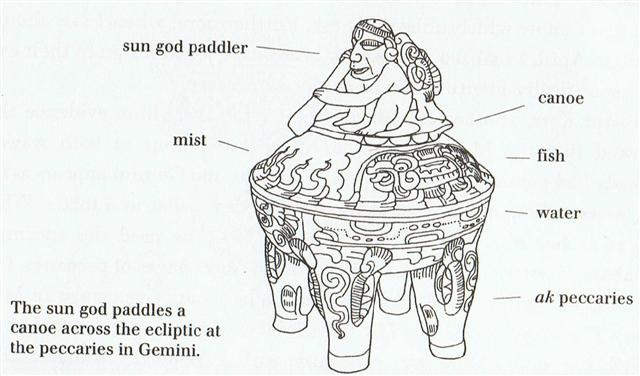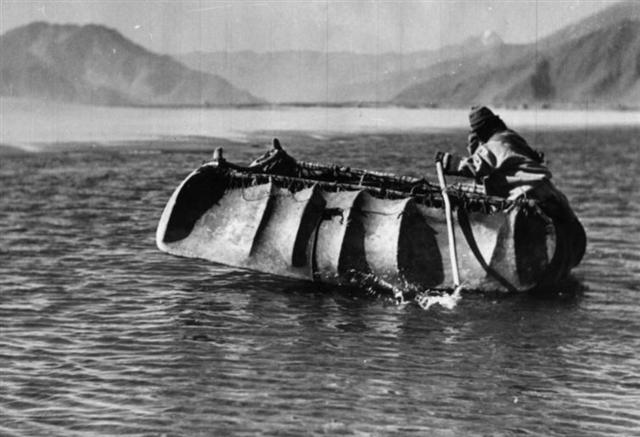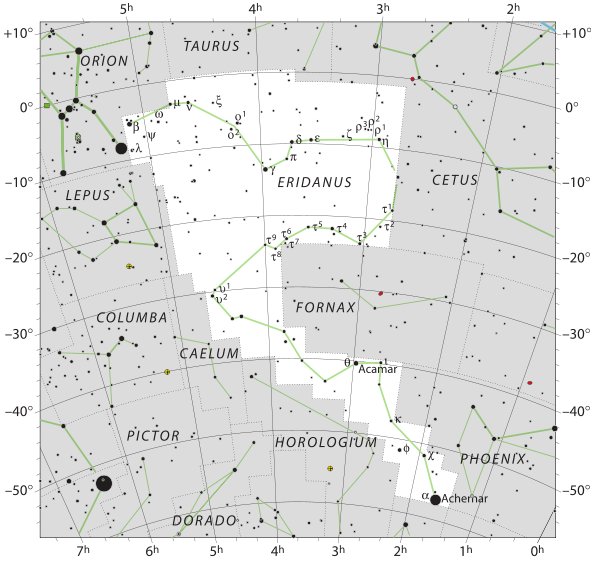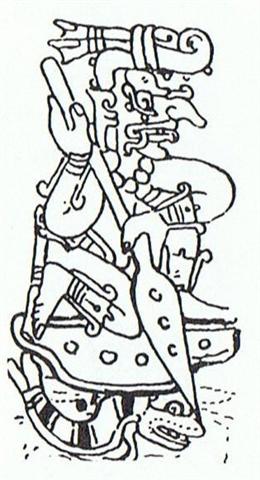RIGEL
Once again. We ought to find the Pleiades star cluster (M45
→ 360 / 8, *55-56)
around 22 calendar days before Ca10-6 at Capella (*78.4) and Rigel. The
page number in Manuscript E - E:23
- suggests we should count from Tau-ono (*55)
→ 6 'heaps of
stones' was the number of the Pleidades star sisters in May 15 (365 + 135 = 500).
... The Mahabharata insists on six
as the number of the Pleiades as well as of the mothers of
Skanda and gives a very broad and wild description of the
birth and the installation of Kartikeya 'by the assembled
gods ... as their generalissimo', which is shattering, somehow,
driving home how little one understands as yet. The least which
can be said, assuredly: Mars was 'installed' during a more or
less close conjunction of all planets; in Mbh. 9.45 (p. 133) it
is stressed that the powerful gods assembled 'all
poured water upon Skanda, even
as the gods had poured water on the head of Varuna, the
lord of waters, for investing him with dominion'. And this
'investiture' took place at the beginning of the Krita Yuga,
the Golden Age ...


|
0h |
 |
*260 |
 |
 |
*100 |
 |
|
Ca1-1 |
Ca10-6 (9 * 29) |
Ca10-7 (262) |
Ca13-20 (→
13 * 20) |
|
March 22
(81, *1) |
Dec 7 (341,
*261) |
Dec 8 |
March 18 (443, *362) |
|
ALGENIB
PEGASI |
Sarin
(*261.0), ο Ophiuchi (*261.4)
ALRISHA
|
θ Ophiuchi,
ν Serpentis, ζ, ι Apodis (*262.4) |
DZANEB
(*362.4)
ACUBENS
|
|
*1 + *183 =
*184 |
CAPELLA
(*78.4)
THUBAN
|
*262 + *183
= *445
ARCTURUS
|
no star
listed (*180) |
|
Sept 21
(264. *184) |
June 7
(158, *78) |
June 8 |
Sept 17
(260, *180) |
|
(*184 - *41 =
*143) |
(158 - 41
= 117, *37) |
"April 28
(→ 4 * 29½) |
(*180 - *41
= *139) |
| koia |
Tupu te toromiro |
kua noho te vai |
- |
And down south it would not be difficult to see the stars because whereas north of the equator this
time of the year had the Sun high up in the sky it was the
opposite on Easter Island.

 |
 |
 |
 |
 |
 |
| Ca9-9 |
Ca9-10 (261 - 23) |
Ca9-11 |
Ca9-12 |
Ca9-13 (241) |
Ca9-14 |
| no star listed (54) |
Atiks, Rana (55.1), CELAENO, ELECTRA, TAYGETA (55.3), MAIA, ASTEROPE, MEROPE (55.6) |
ALCYONE (56.1), PLEIONE, ATLAS (56.3) |
Menkhib (57.6)
Porrima
|
ZAURAK (58.9) |
λ Tauri (59.3), ν Tauri (59.9) |
| May 14 (134) |
The Pleiades |
17 (137, *57) |
18 (→ 2 * 29) |
19 (→ 2 * 29½) |
| "April 3 |
→ (260 - 166) |
5 (95) |
6 (96, *16) |
7 |
8 |
| kotia |
kua rere |
ki te marama |
e moa |
haati kava |
e moa |
|
... Kava will make the eyes more sensitive, generating an illusion of returning light ... |
Clearly glyph number 241 was significant, when ideally the Full
Moon should be at the Boat (Zaurak), denoted
γ (→ *) in the
constellation of Eridanus.
|
Throwing stick? |
 |
Phoenician
gimel |
 |
Greek gamma |
Γ (γ) |
|
... In its unattested
Proto-Canaanite form, the letter [gimel] may
have been named after a weapon that was either a
staff sling or a throwing stick, ultimately deriving
from a Proto-Sinaitic glyph ... Bertrand Russell
posits that the letter's form is a conventionalized
image of a camel. The letter may be the shape of the
walking animal's head, neck, and forelegs [cfr the
way Taurus normally is depicted]. Barry B. Powell, a
specialist in the history of writing, states 'It is
hard to imagine how gimel = 'camel' can be
derived from the picture of a camel ... The word
gimel is related to gemul, which means
'justified repayment', or the giving of reward and
punishment.
The Swedish word gammal means
'old' (and dry like a stick).

... Tu'i Tofua
was the son of Vakafuhu. His mother was
Langitaetaea, but she was only one of the many
young women whom Vakafuhu had living behind
the fences of his dwelling. When Tu'i Tofua
grew he was given the first-born sons of all the
wives for his companions, and they all used to play
sika outside the enclosure of Vakafuhu.
They made their sika of clean-peeled sticks
and threw them in turn
along the ground, they glanced them off a mound and
each one tried to make the longest throw.
One day while Vakafuhu was
sleeping off a kava-drinking those boys were playing
their game outside, and Tu'i Tofua threw his
sika. Then indeed the enormous strength of
Tu'i Tofua made that sika fly over the
fences into his father's place.
It landed where the women were
and they all began to giggle, those girls, and
shriek and laugh. They did this because they wanted
that handsome youth to come among them, they desired
him. More than his father they desired him. They
fell with joy upon the sika of their master's
son, and snapped it. When he came inside to get it
back they called out things that made him
embarrased. 'Haven't you got another long thing
there, Tu'i?' those women said. 'This one's
broken.' And they put their hands across their faces
and they laughed ... |

Furthermore, on the Phaistos Disc I have found
123 + 118 = 241 glyphs.
91 * 3 (Ca9-13) → 273 (→ September
30)
241 (Ca9-13) + 2 * 16 = 273 - 57 (→
Epimenides)

The River of Eridanus was undulating up towards Orion
(→ or rather down because
they poured water down upon Mars)

and possibly
we should compare with the first Mayan day sign
Imix:

This rising water serpent (river) might have been thought of as carrying
the Ship of the Sun as we can see from the first
Raingod sign (reversed by me in order to put the still absent arrow of time
at right):

|











